Feels weird to post something like this so soon after the recent news  but weebshit waits for no man
but weebshit waits for no man
Today's RWBYffort post is about the superior Nintendo slop saga  (Inb4 some
(Inb4 some 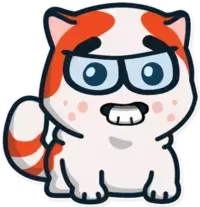 in the comments says Advance Wars) It may not be the deepest thing in regards to writing or strategic gameplay, nor was it built around a grand and inspiring concept like Spore, but I think these games are fun af
in the comments says Advance Wars) It may not be the deepest thing in regards to writing or strategic gameplay, nor was it built around a grand and inspiring concept like Spore, but I think these games are fun af 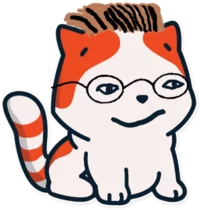 and you have to give them credit for chugging along thirty three years running
and you have to give them credit for chugging along thirty three years running 
Fire Emblem is a turn based strategy game series known for its rpg influences and focus on narrative. It basically codified the tactical role playing subgenre and some people actually do outright refer to the games as RPGs. It was originally very niche but has grown over the years to become one of Nintendo's flagship franchises. I would seriously argue it has surpassed the likes of Metroid  or Donkey Kong
or Donkey Kong  in importance among Nintendo's line up.
in importance among Nintendo's line up.
Some people have serious issues with it.
What set the games apart back in the day was the emphasis on storytelling and the way this paradigm influenced gameplay. FE's basic formula involves controlling an army of units on a grid in a standard turn based strategy manner, but unlike Advance Wars, Nobunaga's Ambition, XCOM, or many other games of the type, Fire Emblem units are not randomly generated nor is there ever a guarantee of replacing losses. The units of your army are very much like companions in an RPG; they're a finite amount of characters with set in stone, predefined strengths and weaknesses and fighting styles, and they're unique and named individuals rather than abstractions of, say, a swordsman or a sniper or a whatever else. Until more recently every game was also built around non-optional permadeath so losing these companions/units in battle could set back your campaign considerably even to the point of it becoming soft unwinnable. Fire Emblem's unique combination of difficulty and RPG elements in a turn based strategy series immediately earned it a small but dedicated fandom.
Though nowadays the newer games are also (in)famous for waifu-ism and dating sim elements not unlike what you'd see out of modern Persona games or BioWare rpgs. It even has a gacha game that's been going for the better half of a decade  It's created an interesting fanbase that can be split into three distinct groups,
It's created an interesting fanbase that can be split into three distinct groups,
The Elitists 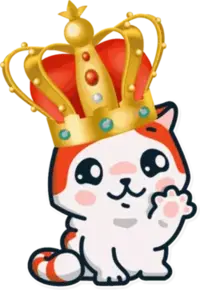
gigaschizos who will spam the thread the very instant someone says something about a particular hero (i.e. Nina)
zero discussion about game mechanics whatsoever
"what mode"
The Casuals 
Never cared about Strag Emblem other than for its BBC snowbunnies
—
@BWC
And Der Coomer 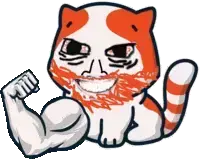
So just how did this longrunning genre defying and defining series come to be? And how has it evolved since then?
The First Fire Emblem 
Everyone wanted to know what kind of game it was. Back then there was nothing like it, and I would say it's closer to an RPG than a simulation game. So at Square, when it came out, we bought it right away, and everyone gathered together to play and study it. I can't say it was the easiest game to pick up and play, but I felt something very special and addicting in it. And of course I've been playing it ever since!
— Hironobu Sakaguchi (Creator of Final Fantasy)
The first Fire Emblem game debuted on the Famicom way back in April 20th, 1990. At the time many of Japan's game journos found it confusing and strangely unlike anything in the conventional strategy genre, but this was also the very quality that endeared it to fans. Fire Emblem may not have invented "tactical rolepaying" but was a huge step forward. Arguably the first game to hit it big while being all in for that genre, rather than just dabbling in it.
Brief History of TRPGs 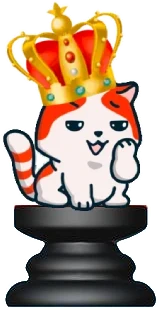
A tactical roleplaying game is something of a nebulous subgenre that combines strategy game aspects with those of RPGs, usually leaning slightly towards one or the other. The games owe some of their inspiration to classic tabletop RPG games in which stats and strategy controlled encounters and forced players to think about their actions.
Some earlier RPGs to feature major strategy elements include 1982's Tunnels of Doom, The Dragon and Princess and Ultima III: Exodus. 83's Bokosuka Wars featured an army in phalanx formation that had to be led across a battlefield in real-time against overwhelming enemy forces while freeing and recruiting soldiers along the way, with each unit also able to gain experience and level up through battle. Though not turn based, the game did introduce tile based combat involving a party of characters and can be said to have laid the groundwork for future games like Fire Emblem. 88's Silver Ghost is another early example of such a game in real-time format.
Fire Emblem's direct predecessor within Nintendo was 88's Famicom Wars, the first game in the Wars series that is now better known for Advance Wars. This game was Nintendo's early foray into strategy games and was also the first such game to be developed by Intelligent Systems, the developers of Fire Emblem.
The game features turn based control of units and particular map objectives that must be accomplished in order to complete missions, but it lacks the fantasy and RPGs elements of IS's later property.
These attributes may have been inspired by 88's Master of Monsters, itself a game that took the gameplay of a militaristic predecessor (the Daisenryaku games) and applied fantasy themes. Master of Monsters is turn based and features an army of units on a board with a master unit that triggers a game over if killed ( ) It notably featured experience bars for the character units.
) It notably featured experience bars for the character units.
Kaga himself also cites 88's First Queen as another strategy influence. More traditional RPG influences for Fire Emblem include none other than Final Fantasy and Dragon Quest.
Shadow Dragon and the Blade of Light 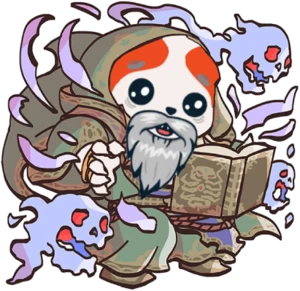
I call it "roleplaying simulation." It's a new genre. Basically, it's a strategy game. But strategy games typically are kind of "hardcore" and dry. (laughs) You only care about winning or losing the battle, and there's no space for the player to empathize with the characters or story.
I love strategy games like that too, but I also love RPGs. By adding RPG elements, I wanted to create a game where the player could get more emotionally invested in what's happening. Conversely, one of the drawbacks of RPGs is that there's always just a single protagonist. Thus, to a certain extent, you can only experience the linear story that the game creator has prepared for you.
I wanted to create a game where the story and game will develop differently for each player depending on the units they use. Thus I added the strategy elements and arrived at this hybrid system.
— Shouzou Kaga
Development for the first Fire Emblem began after Famicom Wars was released and Intelligent Systems decided they wanted a similar war simulation game but with roleplaying elements. Shouzou Kaga was in charge of conceptual design and would go down as the patron saint of elitists the series creator. The project was first proposed to Nintendo by Kaga with a design document detailing all the basic elements, story, and gameplay mechanics. The project was initially called "Battle Fantasy Fire Emblem".
The game's genre necessitated the extensive use of the Famicom cartridge's memory. Shadow Dragon and the Blade of Light exceeded these limits, so Intelligent Systems used a portion of memory dedicated to saving games to get around this limitation. With Nintendo's help, they created a new chip for the cartridge that could process and display Japanese text.
I think this is something people understand once they play the game, but most of the characters are usable. And characters who at first seem like crappy, throwaway characters–if you take the time to build them up and nurture them, they can become incredibly powerful. We made a lot of characters like that.
It allows friends to brag to each other, "Hey, I did it this way. Here, let me show you!" I think that's a key difference between Fire Emblem and Dragon Quest. When people share their experiences in a game like Dragon Quest, it's more like "I got here, how far did you get?"… but in Fire Emblem, it's all about "I did it this way."
There hasn't been a lot of room for the player's originality in previous RPGs, because if you gave the player too much control, it would break the structure of the game. That's the advantage of including strategy mechanics: there's a million different ways to accomplish the same goal, and there's actually room for the player to make choices. And the accumulation of all those choices made leads to a very different experience for each player.
I don't consider Marth to be the protagonist either, except in the sense that if he dies, it's game over. It's totally fine to see the story as revolving around the particular characters that you're partial to.
— Kaga
Kaga has said the staff never considered the game as a commercial product but instead as a dōjin made on a whim. To make this game accessible to a wide audience, Kaga did his best to avoid emphasizing stats and other numerical data. It was instead intended that players could find multiple ways to clear the game through their own play style, without being forced to follow a specific meta or take a very linear path. Any combination of units could see you to the end of the game so players could "use their favorites" and there generally wasn't a wrong way to play the game as long as you were getting kills and xp while avoiding casualties.
Yeah, but after restarting [Final Fantasy] who-knows-how-many times, and finally beating it and seeing the ending… it was extremely satsifying. That's why I don't think easy games are so great. Isn't the important thing how you feel after it's all over?
— Kaga
Though at the same time Kaga was a big believer in difficulty and his idea of accessible doesn't line up with modern AAA developers  Fire Emblem came to be known for both its unusual concept and the challenging nature of its permadeath mechanic.
Fire Emblem came to be known for both its unusual concept and the challenging nature of its permadeath mechanic.
What set Fire Emblem apart? 
Kaga: It's not a big problem if some of your characters die in Fire Emblem; I want each player to create their own unique story. Don't get caught up trying to get a "perfect ending." Have fun!
— Kaga (This advice is ignored by almost every FE fan
)
To be sure, Fire Emblem is turn based strategy first and foremost but draws inspiration from RPGs not just in narrative, but in the gameplay regarding how your army is handled.
Units in FE are not randomly generated and generic grunts, but named characters who will always appear and be recruited in the same way. Narratively they have small snippets of personality and premise that can influence a mission. As examples; Matthis starts as an enemy looking for his lost sister Lena and can only be recruited by her, Navarre is horny an edgelord and so will fight Prince Marth to the death but join the player if spoken to by Princess Caeda, Tiki is a brainwashed dragon girl and can only be freed and recruited by fellow member of her kind Bantu.
In gameplay each unit has predefined strengths and weaknesses. Older games also assign each one a permanent class though class changing became possible later in the series. The differences between classes isn't at all unlike how units work in countless other strategy games, for example you may enjoy x and y because they're both cavaliers or a and b because they're both archers.
But each unit being a distinct person also gives them stat based differences from each other, like x being stronger and y being faster, or a dealing more damage per shot and b being more likely to land his shots. You're meant to develop a preference for certain characters — because of their personalities, because of their specific strengths regarding their class, or both — and so which units you choose to frontline throughout the game will vary between players to create the emergent storytelling Kaga was going for.
The game also gives you plenty of redundant characters for all the classes in case you lose MPVs in battle. So even if you preferred having x as your star cavalry unit, you can still fall back on y if he dies and soldier on.
I wanted to make a strategy game that was more dramatic, something where you would really be able to feel the pain and struggle of the characters. That's why characters can't be revived once they're killed, to impart a sense of gravity and seriousness. In turn, I think the result is that the more love you have for your characters, the more rewarding the game is.
— Kaga
On that note, Kaga's infamous unit permadeath defines the game and the acceptable strategies that will see you through it. You're always outnumbered in Fire Emblem and you're meant to get through each and every level while minimizing casualties, or ideally not suffering any at all. There are only so many units you can ever have, 52 to be exact, and if you lose a handful each battle then you will assuredly burn out before reaching the end (though Marth can never die or it's automatic game over) This problem is especially acute with specific classes, i.e. there's only a few mages and if you get every one killed you'll just have to learn to play without them. Fire Emblem is also stingy with resources and forces you to use them efficiently or suffer severe opportunity costs. The game's balancing in general favors conservative strategies and mitigation of risk. Kaga may have wanted players to be able to win in different ways, but he also wanted them to have to work for it 
Fire emblem was also unusual in the amount of effort behind its writing. Most strategy games at the time only had about as much story as Famicom Wars — red 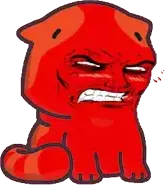 vs blue
vs blue  take it or leave it. There wasn't much reason to include anything more since the Famicom only had so much available space.
take it or leave it. There wasn't much reason to include anything more since the Famicom only had so much available space.
Fire Emblem was written to have the epic storytelling RPGs were associated and featured extensive backstory inspired by classical Greco-Roman mythology. This was presumably the main reason Marth was originally designed without pants  The evil dragon Medeus was also inspired by those sorts of polytheistic elemental figures and was originally called Gaia. There was also supposed to be a whole second water dragon boss inspired by Neptune but this had to be cut due to hardware limitations.
The evil dragon Medeus was also inspired by those sorts of polytheistic elemental figures and was originally called Gaia. There was also supposed to be a whole second water dragon boss inspired by Neptune but this had to be cut due to hardware limitations.
Kaga wanted multiple playable scenarios to break up the linearity of the missions, but storage limitations made this impossible as well. There was also a plan to create setpiece graphics for major moments of the game as well as events that the player might potentially experience in their runs such as Jagen or Princess Caeda dying in battle. The dev team even adopted a new kind of memory chip to make such an unusually grandiose Famicom game possible, but in the end the chip's one megabyte of memory didn't allow for everything. Even just the amount of text in the game was unusual for the time and required that new chip in order to display properly on a Famicom.
The FE Franchise 
When Fire Emblem first came out on the Famicom, the early reviews were really harsh. Every game magazine gave it pretty bad scores. There weren't really many games back then that combined the RPG and strategy / simulation genres, you see. It stung to see it get so much criticism for being "hard to understand", or for not looking that impressive graphically… for those reasons, the reviews said it felt like some old game from yesteryear.
A half year later, though, Nakaji praised Fire Emblem in that column of his for Famitsu… that was really when things started turning around, and the sales gradually picked up.
— Kaga
Fire Emblem: Shadow Dragon and the Blade of Light would ultimately go on to start a hit franchise, but it was not initially a huge success or popular with contemporary critics. The game's formula was new and many reviewers didn't "get it". It was also criticized for being graphically bland and ugly even by the standards of the time.
In contrast, popular opinion was more positive. In a poll taken by Family Computer Magazine, the game scored 23.48 points out of 30. Likewise, sales of the game were flat for the first two months of sales, but improved after word of mouth had spread. Slowly but surely the game became successful and Nintendo was willing to guarantee a sequel. The experimental hybrid of turn based strategy and RPG won the game its dedicated fanbase and would inspire many other game devs to create similar titles.
In Japan 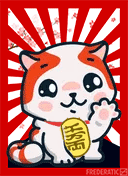 FE 1 is renowned for properly kicking off the tactical roleplaying genre and influencing many other such game franchises. The game doesn't have such a universal reputation in the west, but that's mainly because Fire Emblem wasn't released internationally until FE7 in 2003. By that point weebs had become more familiar with newer entries like the Shining, Ogre, and Disgaea series as well as Final Fantasy Tactics, but these are all games that were developed after Fire Emblem that often took direct inspiration from it.
FE 1 is renowned for properly kicking off the tactical roleplaying genre and influencing many other such game franchises. The game doesn't have such a universal reputation in the west, but that's mainly because Fire Emblem wasn't released internationally until FE7 in 2003. By that point weebs had become more familiar with newer entries like the Shining, Ogre, and Disgaea series as well as Final Fantasy Tactics, but these are all games that were developed after Fire Emblem that often took direct inspiration from it.
Within Nintendo, Fire Emblem was also influential for that live action "opera" commercial as well as the magazine previews. Nintendo would continue this multimedia advertising going forward and applied it to existing franchises like Mario 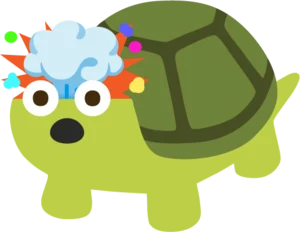 and Zelda
and Zelda 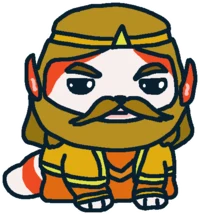
From then on you have 6-8 as the GBA games which were okay but the plots were mostly just average with some fun character moments strewn about. 9 and 10 were on the GameCube and Wii and had better stories, but basically nobody played them.
They then made two remakes for FE1 and FE3 on the DS which were actually fun but their art style was garbage so no one bought them either.
Awakening was the game that revitalized the series a bit and really went crazy with the matchmaking + eugenics aspect that started in 4. Fates did it even more but upped the incest and fetishes.
Fates was criticized for really dumb plots and 1 dimensional character writing despite having some good gameplay so from there the team took a step back, teamed up with the guys who made dynasty warriors and made 3 Houses.
The thing is people were so fricking mad at how badly Fates' plot was even in Japan that they had to look to something like Persona to keep the dating simulator shit in-tact while still telling a story that was at least passable.
How to make it a tactics game again? It's a bit hard to get rid of the persona elements since 3H was immensely successful. FE Engage which came out recently is a bit more of a return to the GBA style gameplay but the writing is back to being weird. I have to imagine future releases will still include the Persona style shit in it.
— Ghost comment
In the next section I'll give a short overview of the franchise's evolution from FE2 to the present day. I'll try to be brief but I could also make dedicated effortposts on the more notable games if anyone wanted 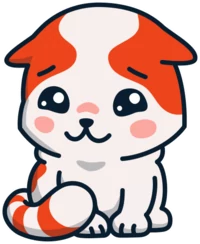
Sequels: The Kaga Era 
You get no respect, no thanks. No NOTHING. To IS and Maeda, you're just another naive, juicy casual child plump with organs to sell on the black market, so they can use the earnings to ruin the franchise even more and keep poor fools living on licorice and cup noodle running their corporate machine.
On the flip side, when I defend Genealogy of the Holy War, me and Kaga have respect, AS MEN. As a consumer, not only has he benefited me, but I have benefited him by maintaining his legacy. Unlike Three-Fates-Awoken casuals who SHIT on it daily, they don't even know what the frick a Thracia is.
The era all the elitists love  though very few of them actually played Gaiden.
though very few of them actually played Gaiden.
The second Fire Emblem game was 1992's Gaiden, the last developed for the Famicom. This game features new main characters and set the series standard of most games taking place in new areas, though the continent here is part of the same world as FE1. Gaiden is also retroactively notable for including some mechanics — like a world map, branching storylines, and unbreakable weapons — that were unusual at the time but would reappear in newer games many years later. Gaiden was also popular and commercially viable though it would go down as kind of a weird game, sometimes compared to Super Mario Bros.: The Lost Levels, Zelda II: The Adventure of Link, and Castlevania II: Simon's Quest as the "black sheep" of the series.
Next came 1994's Fire Emblem: Mystery of the Emblem for the Super Famicom, a story sequel to the first game that also includes a short retelling/remake of FE1 (there was originally going to be a Super Famicom remake of 1 before its development was merged with FE3's)
FE3 was made to be easier  and introduced support conversations to the franchise — a mechanic where characters can talk to each other outside of battle for the benefit of
and introduced support conversations to the franchise — a mechanic where characters can talk to each other outside of battle for the benefit of weebs fujoshis people who appreciate storytelling. FE3 sold well and further established Marth as the face of the franchise 
 (though FE doesn't have a true mascot like other major Nintendo properties)
(though FE doesn't have a true mascot like other major Nintendo properties)
1996's Genealogy of the Holy War was an ambitious soft reboot of the series (set in the same world but in the distant past on another continent) It's also the game every elitist creams their pants over even if they never actually played it and are just trying to fit in 
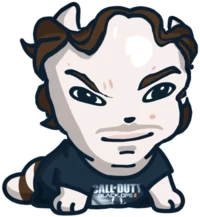
FE4 added the weapon triangle where sword beats axe, axe beats lance, and lance beats sword — a mechanic that has reappeared ever since along with additional variations. The game has an increased emphasis on storytelling and worldbuilding, and the missions are famously long and massive with battle maps being synonymous with entire chunks of the continent. FE4 was actually the first game in the series to introduce romance and "dating sim" elements though it was done for a particular reason. As the game goes on all the first generation characters will eventually die 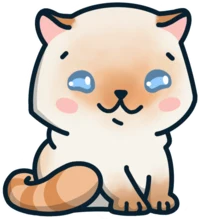 and are replaced as playable units by their children
and are replaced as playable units by their children  The second generation units have their stat values and personal skills influenced by the assigned attributes of their parents and their talents can vary wildly depending on pairings.
The second generation units have their stat values and personal skills influenced by the assigned attributes of their parents and their talents can vary wildly depending on pairings.
Kaga's last game and the favorite of the super elitist. Thracia 776 is something like a side story to Genealogy and was released in 1999 through a Nintendo Power Cartridge — a video game distribution service for the Super Famicom and GameBoy.
Thracia is known among the ten people who actually played it for its added fatigue system that punishes overuse of individual units and its unintuitive levels (elitists actually enjoy this 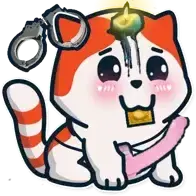 ) One of the more infamous levels involves escaping with your army across a map. Something that isn't clear to everyone especially considering the language barrier is that protagonist Leif should be the last to cross the line. Sending him away first will end the level and literally delete the rest of your army
) One of the more infamous levels involves escaping with your army across a map. Something that isn't clear to everyone especially considering the language barrier is that protagonist Leif should be the last to cross the line. Sending him away first will end the level and literally delete the rest of your army 
Thracia was originally meant to be just one of several potential "add-ons" to FE4 — dlc obviously wasn't a thing back then but Kaga still desired expansions of sorts to Genealogy. Thracia's delayed development made releasing it as anything but another game unviable, and its launch promptly ended the Judgral era of the series, but it's still interesting to think of what might have been. Kaga was fascinated with the idea of telling FE4's war story across different POVs and was even considering a game from antagonist Arvis' perspective 
FE4 and 5 are also famous for incest (and they wouldn't be the last 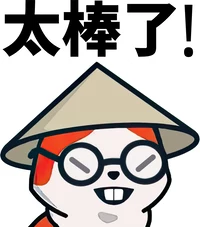 )
)
GBA to Tellius to DS: FE6 - 12
—
@Downie
The era that introduced filthy casuals  also known as westerners
also known as westerners  Elitists do favor the Tellius games though. A handful of coomers were also born thanks to Lyn and her Mongolian underwear.
Elitists do favor the Tellius games though. A handful of coomers were also born thanks to Lyn and her Mongolian underwear.
Shouzou Kaga left Intelligent Systems after Thracia's release and went on to make Tear Ring Saga for the PlayStation, another elitist favorite. The series continued without him and finally made it to international release starting with 7.
The Binding Blade was released for the Game Boy Advance in 2002 and was the first game in the series on a handheld console. It was also the first to depict an entirely new setting with no connections to previous games. It features branching mission paths to a greater degree than previous games and has toned down difficulty after Thracia filtered normal people.
And I'm out. Knowing that there is a Fire Emblem game called Super Smash Brothers is already enough for me. Their shitty fans can throw themselves over the bridge.
It was also around this time that Super Smash Bros. Melee was released 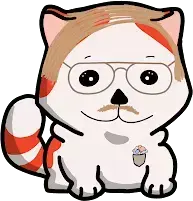 Smash Bros creator Sakurai
Smash Bros creator Sakurai  is a big fan of Fire Emblem and Marth was originally meant to appear in the very first game. He finally made it in with Melee alongside The Binding Blade protagonist Roy, the latter to advertise that at the time upcoming game (starting a tradition regarding FE and Smash Bros
is a big fan of Fire Emblem and Marth was originally meant to appear in the very first game. He finally made it in with Melee alongside The Binding Blade protagonist Roy, the latter to advertise that at the time upcoming game (starting a tradition regarding FE and Smash Bros  )
)
Back then no Fire Emblem game had ever released outside of Japan and it was intended that Melee's localizers would simply remove the two for the international copies. They didn't  and many westerners were introduced to the series for the very first time through these two mysterious swordsmen they knew nothing about. Marth and Roy proved popular though, and by Nintendo's admission this contributed to the expansion of the next game's release.
and many westerners were introduced to the series for the very first time through these two mysterious swordsmen they knew nothing about. Marth and Roy proved popular though, and by Nintendo's admission this contributed to the expansion of the next game's release.
Meanwhile Fire Emblem characters have continued to show up in newer Smash Bros titles. Many Smash fans absolutely despise this fact so make sure to remind them at every turn 
Released in 2003 as just Fire Emblem in some markets, The Blazing Blade was the first to be available worldwide and finally brought the franchise to the attention of the west. The game is a prequel to Binding Blade and features Roy's father Eliwood Roy from the hit game Smash Bros.
FE7's success saw the birth of the Anglosphere fandom and is where most of the thirty year old boomers were introduced to the series 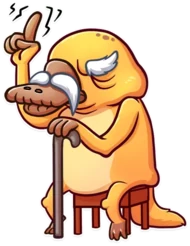 This game was also the first to include multiplayer, though that feature does not universally reappear and tends to be off and on across releases. It's technically the first game to feature a self-insert stand in for the player in the form of the tactician Mark, but he's not actually playable.
This game was also the first to include multiplayer, though that feature does not universally reappear and tends to be off and on across releases. It's technically the first game to feature a self-insert stand in for the player in the form of the tactician Mark, but he's not actually playable.
The last game for the GBA, 2004's The Sacred Stones created yet another unique setting and brought back the overworld map from Gaiden. It also introduces branching class evolutions, for example a cavalier can be promoted into either a Paladin or a Great Knight.
This game is also known for incest, though it's actually unfair in this case 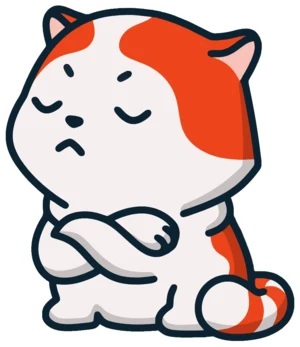
Bring back radiant dawn era Ike, just a bear of a man single handedly destroying entire countries
For a time there was a Fire Emblem every year, and the series returned to home consoles in 2005 with Path of Radiance for the GameCube. FE9 was a more "big budget" release and was the first to feature 3D graphics, full motion cutscenes, and voice acting. There are also playable furries 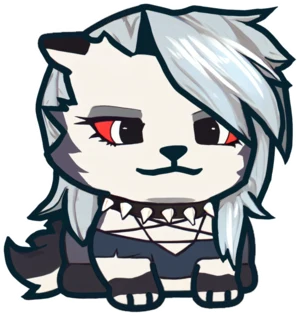
2007's Radiant Dawn for the Wii returns to the previous game's Tellius setting, creating a duology much like FE6/7. It was the last time the elitists were ever happy 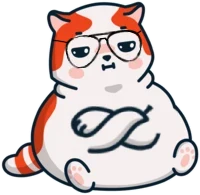
The game has new protagonist Micaiah  alongside Ike from
alongside Ike from the previous game Super Smash Bros. Brawl. They lead two different armies and there are times when the player must actually fight units from your other controllable army  There's also a unique save file transfer that allows you to inherit bonuses from a Path of Radiance playthrough. Other changes include a high ground
There's also a unique save file transfer that allows you to inherit bonuses from a Path of Radiance playthrough. Other changes include a high ground  bonus, double promotions on classes, and expanded supports so any unit can support any other unit instead of just a few. To my knowledge this is also the only FE with crossbows
bonus, double promotions on classes, and expanded supports so any unit can support any other unit instead of just a few. To my knowledge this is also the only FE with crossbows 
But what FE 9 and 10 are really remembered for was low sales despite their positive reception and popular reputations into the present. Path of Radiance had middling sales compared to the GBA games, but Nintendo was still willing to give it a sequel. Radiant Dawn's performance made them rethink the viability of the series and almost killed Fire Emblem outright.
The Tellius series' poor performance has been blamed on a variety of factors; poor marketing from Nintendo especially in the west, the "sudden" transition to home consoles (from a western perspective), difficult competition from the big name games of 2007 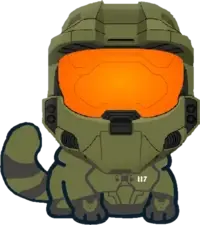 GameCube unpopularity for 9, being a sequel to a game not everyone had heard of for 10, and so on.
GameCube unpopularity for 9, being a sequel to a game not everyone had heard of for 10, and so on.
Whatever the cause, Radiant Dawn's poor sales alarmed the Nips  and the next two games were scaled back.
and the next two games were scaled back.
2008's FE11 was the series' first remake, a modernized take on Marth's original adventure for the Nintendo DS. The game was made on a reduced team and budget and played it safe, notably returning to handheld and finally fulfilling the FE1 redo that had been tossed around as an idea since Kaga's time.
Shadow Dragon actually made a significant improvement to the series by adding class changes beyond promotions. For the first time units could be swapped into entirely different classes, i.e. your cavalier could now be a mage or archer or whatever else. Individual characters still have their talents and may not perform well in certain roles, but the choice is yours. The game otherwise left out narrative developments, and one of the main criticisms was the lack of long since expected support conversations.
Anecdotally Shadow Dragon was my first FE 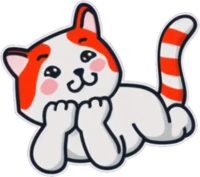 and I think there's a lot to like about it, but the game was generally disliked at the time especially in the west where fans had no nostalgia for 1 and compared it unfavorably to Blazing Blade. Because of poor sales overseas,
and I think there's a lot to like about it, but the game was generally disliked at the time especially in the west where fans had no nostalgia for 1 and compared it unfavorably to Blazing Blade. Because of poor sales overseas,
2010's FE12 was only released in Japan, the last Nip exclusive and almost the last FE at all. New Mystery of the Emblem is a remake of 3 without the original's partial FE1 retelling. It continues Shadow Dragon's modernizations along with expanded supports. It also introduces OC Kris, the first "avatar" or "MyUnit" to be a playable character. Kris' appearance is customizable and can be made into any starting class. Purists hated the self-insert and still do 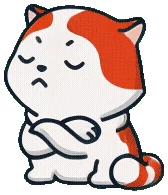 but this would become a tradition going forward.
but this would become a tradition going forward.
New Mystery is also popular with the fandom but didn't sell well either. In the long run Fire Emblem had been on a downward trend with the original FE3 still the best selling game in Japan as of 12's release. Blazing Blade was a breakout hit thanks to an international release but western sales soon fell off. Nintendo wouldn't have continued at all if weren't for the following entry.
Dating Sims Persona Modern Fire Emblem 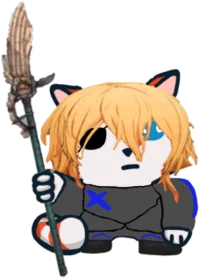
Pretty much everything after Radiant Dawn is dog water unless its a remake of an older game.
The era of coomers, with normie casuals in second place. Elitists desperately cling to Conquest to sustain themselves.
Always something of a niche franchise even in the best of days, Fire Emblem exploded in popularity with 13 and immediately went from life support to one of Nintendo's A-listers. This success continues into the present and has guaranteed intentional releases for all subsequent games. There have also been a few spin-offs.
Awakening could honestly be its own post and is arguably the most impactful besides 1. Awakening started development as what may have been the last Fire Emblem and was made as something of a swan song. Among the staff members were veterans of the Fire Emblem series, including project manager Masahiro Higuchi, who had first worked on Genealogy, and Intelligent Systems producer Kouhei Maeda 
who first worked as a scenario writer for Binding Blade.
Released in 2012 on the 3DS, Awakening returns to the original setting but advanced two thousand years into the future. Regular protagonists Chrom and Lucina are even descendants of Marth. A few justifiably long lived characters return for the narrative and the dubiously canon spotpass levels allow characters from every previous game to become playable units. The game balances its own storyline along with 12 games worth of easter eggs.
Awakening also furthered 12's innovation through the (in)famous self-insert protagonist Robin. As an avatar/MyUnit Robin is something like a BioWare/Bethesda protagonist and is completely customizable. Robin is also set up to be completely overpowered and comes with both a unique class and the ability to become almost any other class, excelling at any role you give them. Robin can also bone literally every other playable character  and there's no denying how much this contributed to the game's popularity among certain people
and there's no denying how much this contributed to the game's popularity among certain people 
Indeed, Awakening went full r-slur with romance and shipping and created a now recurring mechanic where supports between certain characters could reach an intimate S rank to pair them off. The player can choose their own waifu with Robin and then play matchmaker with your other eligible bachelors and bachelorettes, a development that attracted everyone from turbo-coomers to tumblr types writing 500,000 word OTP fanfics.
Said shipping also brings back the child units from FE4, except that they now coexist with their parents thanks to time travel 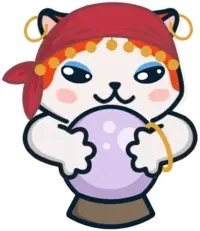 Your exact pairings between potential mothers and fathers will change their stats and inherited abilities. Child units can easily end up stronger than any first gen character and the game's harder difficulties all but require you to play eugenics simulator
Your exact pairings between potential mothers and fathers will change their stats and inherited abilities. Child units can easily end up stronger than any first gen character and the game's harder difficulties all but require you to play eugenics simulator 
Awakening's other gameplay improvements include pairing up units to support each other in combat/map movement, a modified reclassing system that can be gamed for practically unlimited level ups, and benefits to placing units beside each other on the map like stat bonuses and blocking of enemy attacks. The game was also the first to finally do away with non negotiable permadeath, the final obstacle to the casual infestation 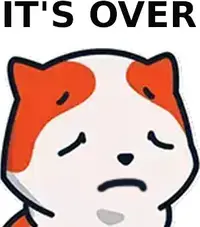 Casual mode allows fallen characters to simply return at the end of a chapter. Awakening offers a wide variety of difficulty settings in general, some of the easiest and hardest in franchise history, and all with both casual and the permadeath enabled "classic" as options. The game is particularly infamous for "Lunatic Plus" which is designed to screw you with rng.
Casual mode allows fallen characters to simply return at the end of a chapter. Awakening offers a wide variety of difficulty settings in general, some of the easiest and hardest in franchise history, and all with both casual and the permadeath enabled "classic" as options. The game is particularly infamous for "Lunatic Plus" which is designed to screw you with rng.
Awakening was also the first Fire Emblem to receive downloadable content. It even got an expansion of sorts, The Future Past.
Awakening was a real yolo attempt from the devs, series had to adapt or die.
--
@AmericanShippingCompany and
@Fabrico
Awakening was massively successful on release. The devs were told during production that Fire Emblem would be discontinued if the game failed to sell 250,000 copies -- upon release the game reached that goal in its first week. FE13 would be like Blazing Blade on steroids, bringing in a massive wave of brand new fans and placing the franchise solidly on Nintendo's radar. As of January 2017, the game has sold-through 1.9 million copies worldwide, with 500,000 copies sold in Japan and 1.4 million copies elsewhere.
2015's Fates is an original setting but is very much in the same vein as Awakening. It continues the majority of FE13's developments including shipping, child units, and a new avatar. Fates' main gimmick was a release not unlike how Pokémon games are done. Birthright and Conquest are two separate campaigns that both received full priced physical releases. The full experience requires you to buy one and then pay to digitally download the other. A third Golden Ending campaign, Revelation, was released later as a digital download. It didn't have a physical release outside of the game's super duper limited edition that retailed for something like seventy dollars 
In fairness the three campaigns feature unique levels and rosters. Conquest in particular was designed to be tougher with limited resources for an old timey FE experience  Still, Nintendo's model for Fates wasn't appreciated by the fan base and generated backlash. The game sold well but the Nips actually listened and haven't attempted this again.
Still, Nintendo's model for Fates wasn't appreciated by the fan base and generated backlash. The game sold well but the Nips actually listened and haven't attempted this again.
This game is also known for incest.
This period also saw several Fire Emblem spin-offs for the first time. Tokyo Mirage Sessions ♯FE was a 2015 crossover with Shin Megami Tensei.
Fire Emblem Heroes is a 2017 gacha game built like so many other examples of the genre. It's far from the deepest game but it generates tons of money because of images like this.
Not much else to say about it really 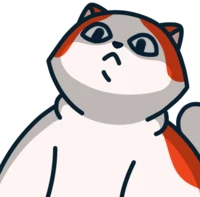
Another 2017 spin-off, Warriors is a Dynasty Warriors esque game made by Omega Force and Team Ninja from Koei Tecmo. The game wasn't the end of this partnership.
The next 2017, mainline, and final 3DS FE game was a remake of Gaiden of all things and so far the last remake made. Like Shadow Dragon, Shadows of Valentia preserves some of the original, mainly map design and cantor spam  but includes radical changes like visiting villages and limited third person dungeon crawling. Perhaps the most significant was a turn rewind mechanic that allows players to undo oopsies
but includes radical changes like visiting villages and limited third person dungeon crawling. Perhaps the most significant was a turn rewind mechanic that allows players to undo oopsies  and replay turns without having to reset the map. So far this addition has been permanent.
and replay turns without having to reset the map. So far this addition has been permanent.
The game was popular but also suffered the same curse as all other games the elitists don't hate -- sales were far lower than Fates. It's uncertain if Nintendo was planning any other remakes but that hasn't stopped people from asking for Genealogy 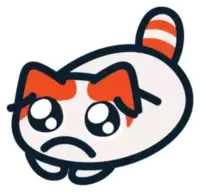
The one you've probably heard of, 2019's Three Houses for the Switch was another massive boon for the series and remains the best selling title. In many ways a take two on Fates, FE16 includes multiple campaigns without charging extra and intentionally avoided having a single best ending -- people die in every possible route 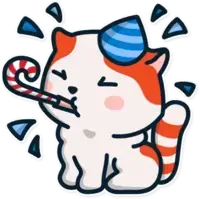 Class changing is less restricted than ever and rewinding time is made part of the game's balance. The game also adds new game plus bonuses that make it easier on subsequent playthroughs if desired. Slice of life activities in your main base can provide bonuses to your units in battle. Waifu-ism remains but the game's not as sexualized as its predecessors. Note that it's
Class changing is less restricted than ever and rewinding time is made part of the game's balance. The game also adds new game plus bonuses that make it easier on subsequent playthroughs if desired. Slice of life activities in your main base can provide bonuses to your units in battle. Waifu-ism remains but the game's not as sexualized as its predecessors. Note that it's @birdenthusiast approved
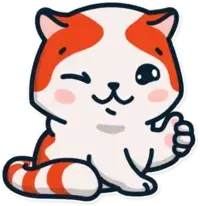
Three Houses wasn't developed by Intelligent Systems alone and Koei Tecmo was brought in to contribute after Warriors was finished. The game's scenario was written by Koei Tecmo's Yuki Ikeno, Ryohei Hayashi and Mari Okamoto which would explain why it wasn't as terrible as Fates and the next game.
This partnership also led to another Warriors game, this time set entirely within Three Houses' setting as an alternative timeline.
Three Houses is also notable for the sheer amount of autism it has inspired. The game's multiple routes/waifu wars have generated unending discourse and flamebaiting that continue to the present day. rDrama has covered this more than once.
The most recent Fire Emblem, 2023's Engage is kind of a shitpost mainline entry. It features an original setting but also has a crossover plot involving past FE protagonists. The game's gimmick is the ability to ENGAGE  with past FE characters to give temporary upgrades and powers to whichever unit equips their summoning ring. Other developments include a more prominent weapon triangle, chain attacks and chain guards, and a less egregious home base system compared to Three Houses.
with past FE characters to give temporary upgrades and powers to whichever unit equips their summoning ring. Other developments include a more prominent weapon triangle, chain attacks and chain guards, and a less egregious home base system compared to Three Houses.
Engage sold less than FE16 and has a reputation little better than Fates'. Its drama is even more r-slurred than Three Houses'.
Time will tell how Fire Emblem develops in the future 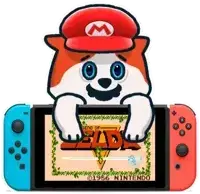
But at this rate it's probable elitists will soon go extinct 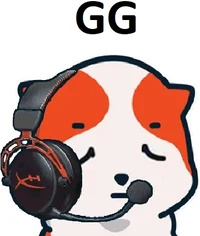
And with that rDrama is now familiar with Nintendo's best series.
Genealogy remake for the Switch 2? 
This effortpost is dedicated to its patron @birdenthusiast
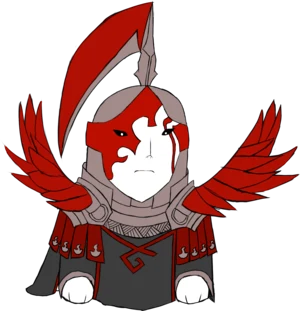







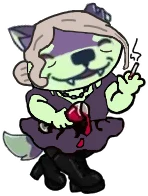
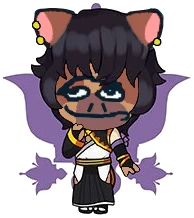
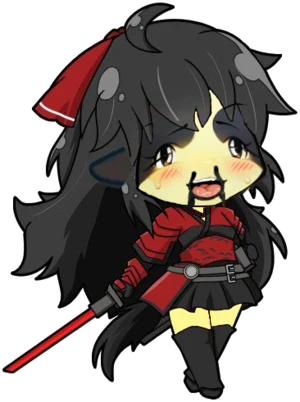
 someone posted one last month and that wasn't interesting
someone posted one last month and that wasn't interesting
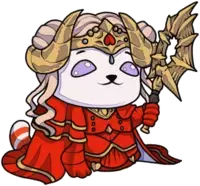














































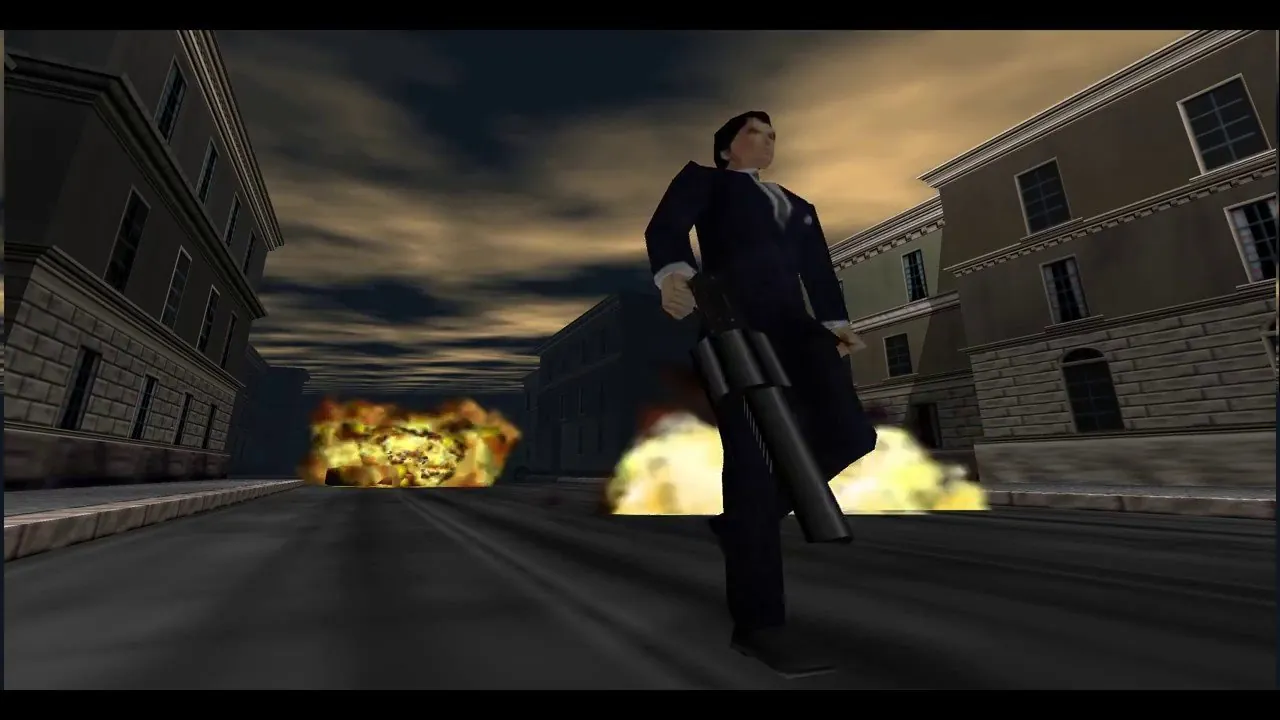
Jump in the discussion.
No email address required.
I didn't read your post but thank you for quoting me!
/fehg/ truly is the worst thread on /vg/ and still is. I guarantee if I were to check the first dozen posts would be pedos arguing over which manakete (child dragon girl) they want to frick the most.
Jump in the discussion.
No email address required.
More options
Context